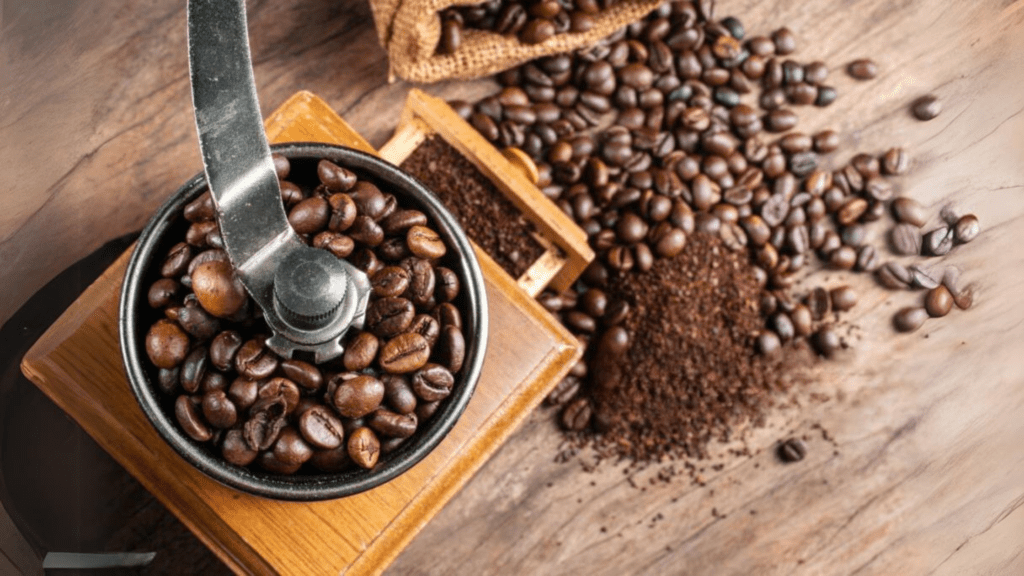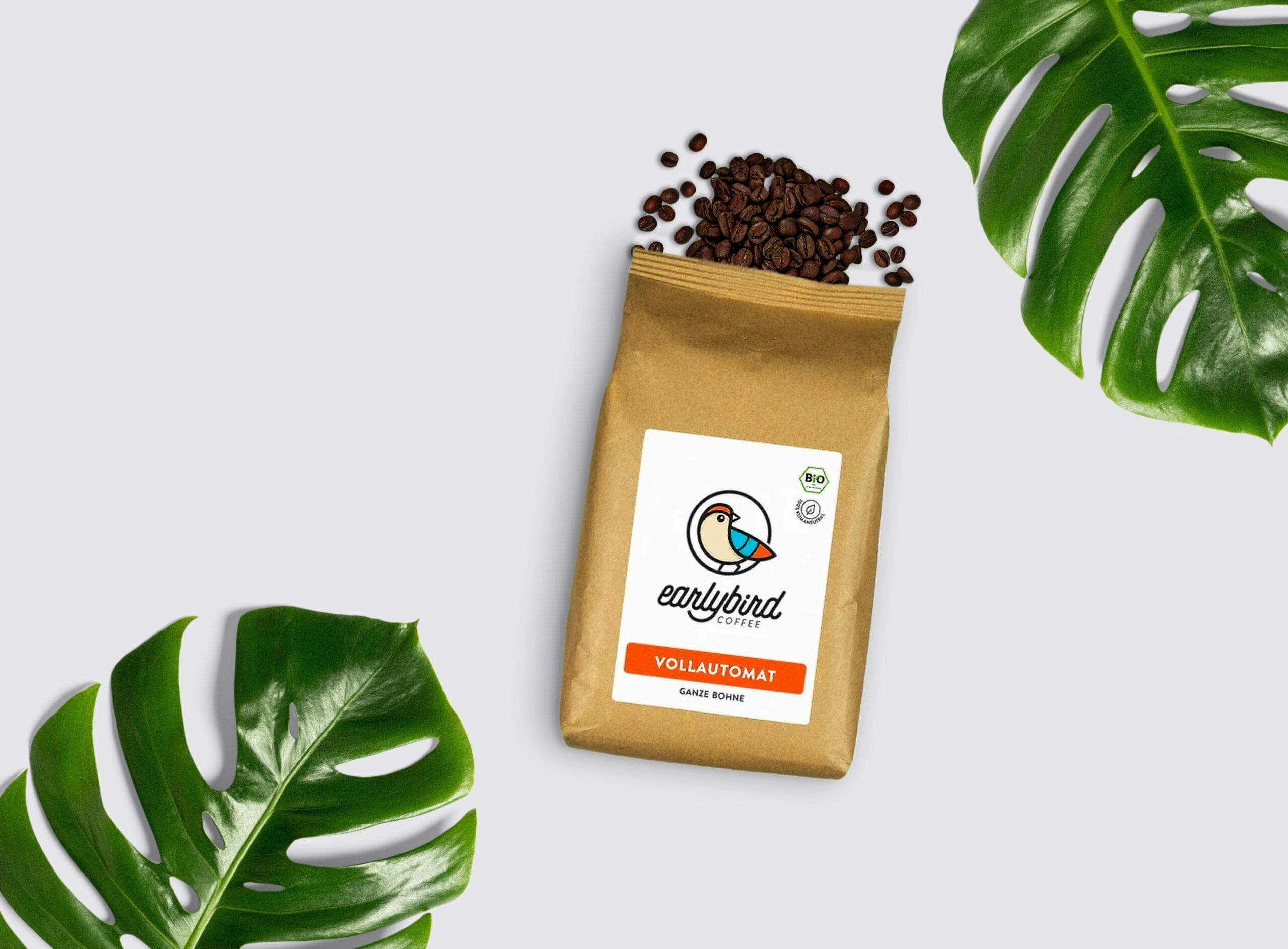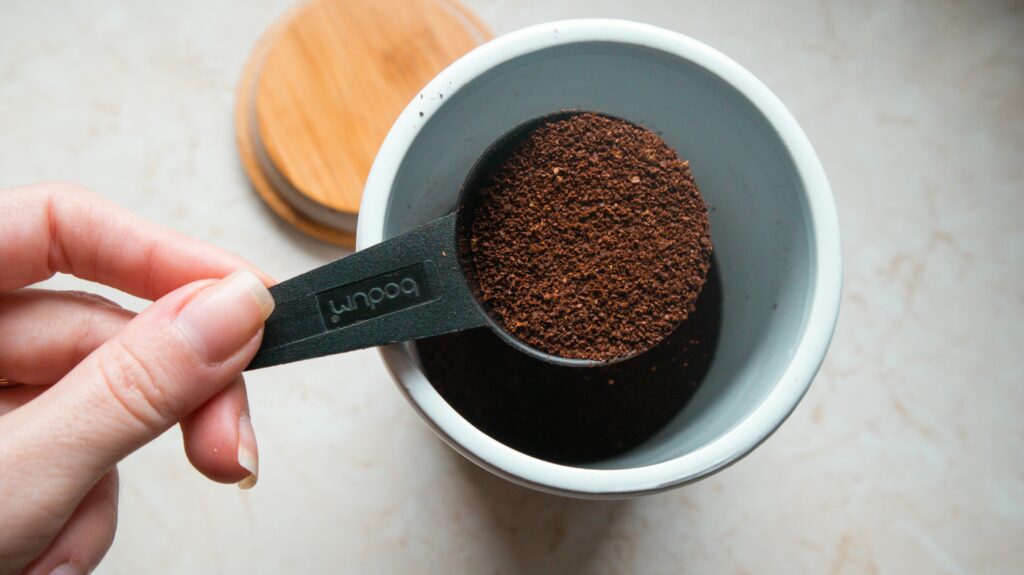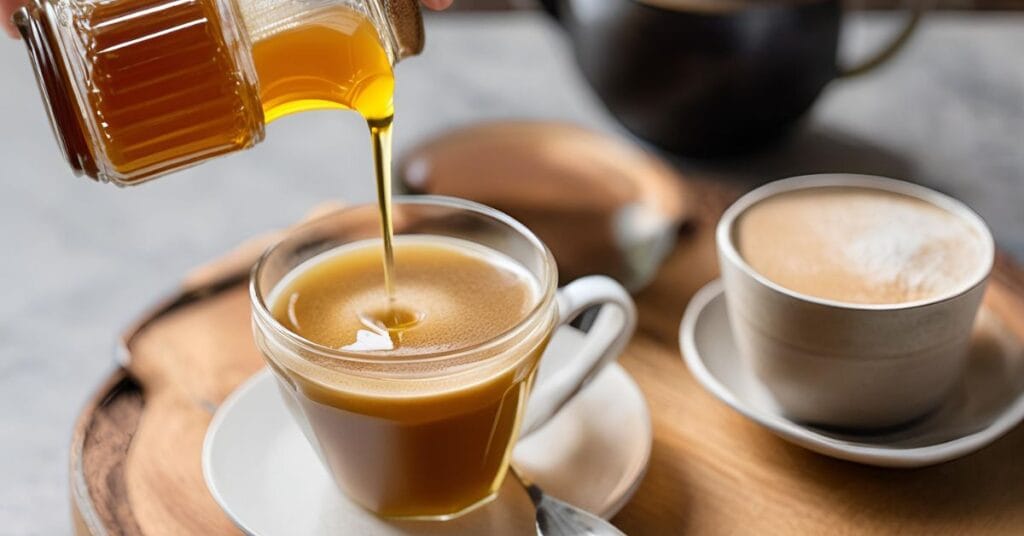When I pick up a bag of coffee, I remember the first time I was captivated by a beautiful design on a coffee package—it was that moment I realized how much packaging influences my decision. The packaging is often the first thing that draws my attention. It’s not just about the pretty colors or an eye-catching logo. There’s a lot more that goes into choosing the right coffee, and packaging plays a huge role in that decision-making process. In this article, you’ll learn what makes coffee packaging effective and how it influences buying decisions also will explain what consumers look for in coffee packaging.
Table of Contents
ToggleWhat is Coffee Packaging?
Definition
Coffee packaging refers to the container or material used to hold and preserve roasted coffee beans or ground coffee. The main goal is to protect the freshness and flavor of the coffee while making it visually appealing and informative for consumers.
The Importance of Coffee Packaging: Key Statistics and Market Insights
Coffee packaging is not just about aesthetics; it has a direct impact on consumer choices and market trends. According to recent market research, the global coffee packaging market is projected to grow at a CAGR of 4.5% between 2021 and 2027. Studies show that 72% of consumers are influenced by packaging design, while 62% consider sustainability a crucial factor in their buying decision. This highlights the critical role of packaging in the coffee industry, not only in attracting consumers but also in ensuring product quality and sustainability.
| Coffee Packaging Statistics | Value |
|---|---|
| Global Market CAGR (2021-2027) | 4.5% |
| Consumers Influenced by Design | 72% |
| Consumers Considering Sustainability | 62% |

Visual Appeal: First Impressions Matter
The first thing that strikes me when I see coffee on the shelf is the visual appeal of the packaging. This is why first impressions matter, especially when there are so many choices available. Whether I’m shopping in a store or browsing online, the design is what catches my eye first. Bold colors, minimalist aesthetics, and beautiful illustrations can make a package stand out from a crowded shelf. For example, brands like Blue Bottle Coffee use clean, minimalist designs that convey quality and sophistication, making their products instantly recognizable. I’m drawn to packaging that tells a story visually. For example, if a bag has illustrations of mountains, I immediately think of high-quality, high-altitude beans that have a rich flavor.
Key Elements of Visual Appeal
- Color Scheme: Bright colors or earth tones, depending on the type of coffee (light roast versus dark roast), always give me a sense of what to expect.
- Font and Design: Unique fonts and clear labels make it easy for me to identify the type of coffee and where it’s from.
- Storytelling through Imagery: A picture can convey so much—like coffee beans handpicked by farmers—which helps create an emotional connection.
| Visual Element | Importance to Consumer (1-5) | Example |
| Color Scheme | 4 | Earth tones for dark roast |
| Font and Design | 5 | Unique, legible fonts |
| Imagery | 4 | Illustrations of mountains |

Informative Labeling: Clarity is Key
Once the package catches my eye, the next thing I look for is the information provided on the label. These details are important for ensuring quality and transparency, which helps build trust with consumers. There are several key pieces of information that I need to feel confident about my purchase. The origin of the beans is incredibly important to me because I know that Ethiopian beans, for instance, will have a very different taste profile compared to beans from Colombia. Details like the roast level, flavor notes, and even brew method recommendations help me determine if this coffee is right for my taste and brewing preferences.
Essential Information Consumers Look For
Bean Origin: The country, and sometimes even the region, of origin.
Roast Date: Freshness matters, so I always check the roast date to ensure I’m getting freshly roasted beans.
Roast Level: Whether it’s light, medium, or dark roast, it helps me decide if it fits my preferences.
Flavor Notes: Descriptions like “chocolatey” or “citrusy” help me envision the taste.
Certifications: Fair Trade, Organic, and other certifications can influence my decision by aligning with my values.
| Information Type | Importance to Consumer (1-5) | Example on Packaging |
| Bean Origin | 5 | Ethiopian Highlands |
| Roast Date | 5 | Roasted on: 2023-09-25 |
| Roast Level | 4 | Medium Roast |
| Flavor Notes | 5 | Citrus, Floral, Bright Acidity |
| Certifications | 3 | Fair Trade Certified, Organic |

Sustainability: The Environment Matters
Another key factor for me when choosing coffee is sustainability. I care deeply about reducing my environmental footprint, and choosing sustainable packaging is one way I can contribute to a healthier planet. It makes me feel more connected to my purchase, knowing that I’m supporting brands that prioritize environmental responsibility. More and more consumers are becoming environmentally conscious, and I’m no different. Packaging that uses recyclable or biodegradable materials really stands out. I want to feel good not just about the coffee I’m drinking but also about the environmental impact I’m making. Seeing a label that says the packaging is compostable or made from recycled materials makes me more likely to buy that coffee. It gives me a sense of satisfaction, knowing that I’m making a choice that aligns with my environmental values and contributing to a more sustainable future.
Sustainable Packaging Features I Value
- Biodegradable Materials: Packaging that will break down without harming the environment.
- Minimal Plastic Use: Less plastic is always a win for me, and I tend to prefer bags that are entirely made from paper or other natural materials.
- Clear Messaging: If the packaging is sustainable, it helps if the brand clearly mentions it on the bag. Something like “100% compostable” makes me feel more confident in my purchase.
| Sustainability Feature | Importance (1-5) | Example |
| Biodegradable Material | 5 | Made from natural plant fibers |
| Minimal Plastic Use | 4 | Mostly paper with minimal plastic |
| Clear Messaging | 4 | “100% Compostable Packaging” |
Functional Aspects: Freshness and Usability

Apart from aesthetics and information, there are also practical features of coffee packaging that matter to me. One of the most critical elements is freshness. Many bags come with a one-way valve that allows the carbon dioxide to escape while preventing oxygen from entering. This keeps the beans fresh for longer, which is crucial for me to enjoy my coffee at its peak flavor. I also prefer resealable bags, as they help keep the coffee fresh once the package has been opened.
How Does Packaging Affect Coffee Freshness?
The packaging plays a crucial role in keeping coffee fresh by preventing exposure to oxygen, moisture, and light. Using a one-way valve and resealable closure helps maintain the quality of the beans. Studies show that improper packaging can lead to a significant decrease in flavor quality over time, affecting the overall coffee experience. For example, a study by the Coffee Quality Institute found that exposure to oxygen can reduce coffee flavor by up to 40% within two weeks.
Functional Features That Influence My Choice
One-Way Valve: Maintains freshness by letting carbon dioxide escape.
Resealable Closure: Keeps beans fresh longer and makes storage easier.
Durable Packaging: A bag that doesn’t easily tear is a must, especially if I’m buying a larger quantity of beans.
| Functional Feature | Importance (1-5) | Why It Matters |
| One-Way Valve | 5 | Maintains bean freshness |
| Resealable Closure | 4 | Convenience and prolonged freshness |
| Durable Material | 3 | Prevents damage during storage |
How Long Does Vacuum-Packed Coffee Last?

Vacuum-packed coffee is a popular packaging choice for preserving freshness over a long period. Vacuum-sealing removes oxygen, which is one of the main culprits behind the degradation of coffee flavor. According to Coffee Beans, vacuum-packed coffee can last for up to 6-9 months if stored properly in a cool, dark place. The shelf life may extend to 2 years if the package remains sealed and unopened.
Key Points for Vacuum-Packed Coffee Longevity
- Unopened Vacuum-Packed Coffee: Can last 6-9 months in optimal conditions.
- Storage Environment: Should be stored in a cool, dark place, away from direct sunlight.
- Extended Shelf Life: Up to 2 years if stored unopened.
| Condition | Shelf Life |
|---|---|
| Sealed and Unopened | Up to 2 years |
| Opened | 6-9 months in optimal conditions |
How to Choose the Best Coffee Packaging?

Choosing the best coffee packaging involves balancing several factors, including freshness, sustainability, branding, and convenience. From my experience, the following factors play an important role in selecting the best packaging:
Key Considerations for Coffee Packaging
Freshness Features: Look for packaging with a one-way valve to release carbon dioxide while preventing oxygen from entering, keeping your coffee fresher for longer.
Sustainability: Choose packaging made from recyclable or compostable materials to minimize your environmental impact.
Branding and Visual Appeal: Packaging should be attractive and convey the quality of the product. Brands like Blue Bottle Coffee use minimalist designs to create a premium feel.
Functionality: Resealable closures help maintain freshness after opening, and durable materials prevent damage during transportation.
How to Balance Cost and Sustainability in Coffee Packaging?
Balancing cost and sustainability is a key concern for coffee producers and consumers alike. The goal is to use environmentally friendly materials without significantly increasing costs.
Tips for Balancing Cost and Sustainability
Use Hybrid Materials: Opt for a combination of recyclable and affordable materials to keep costs manageable.
Consider Bulk Packaging: Offering larger quantities of coffee in bulk packaging can reduce material use and lower costs per unit.
Assess Supplier Options: Work with suppliers that provide sustainable materials at competitive prices.
Consumer Education: Educate consumers about the benefits of sustainable packaging, which can justify a slight increase in price for a more environmentally-friendly option.
Types of Coffee Packaging: What Works Best?
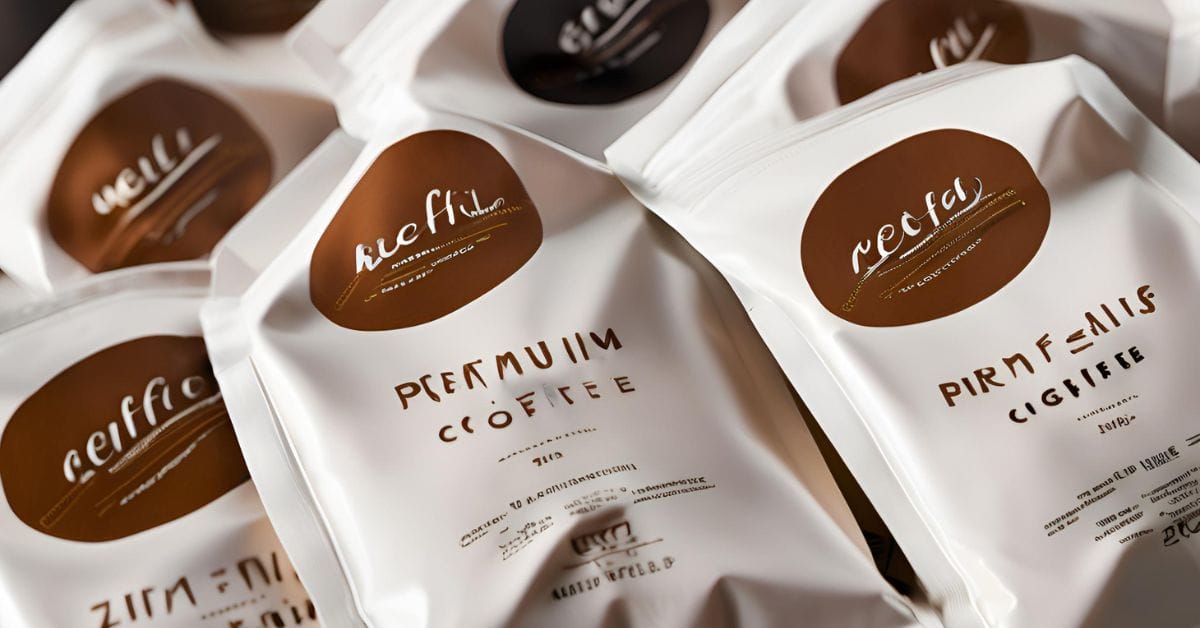
I’ve encountered different types of packaging during my travels, and each has its pros and cons. From my experience, I find that foil-lined bags with resealable zippers work best to keep the coffee fresh while also being convenient to use. Glass jars are aesthetically pleasing but can be bulky and aren’t always practical for shipping. Compostable paper bags are excellent for sustainability but may lack durability if not handled properly.
| Packaging Type | Pros | Cons |
| Foil-lined Bag | Keeps coffee fresh, resealable | Not always eco-friendly |
| Glass Jar | Aesthetic, reusable | Heavy, can break easily |
| Compostable Paper Bag | Environmentally friendly | Less durable, can tear easily |
How is Coffee Packaged for Shipping?
When it comes to shipping, coffee must be packaged in a way that ensures it stays fresh and undamaged. Most coffee roasters use foil-lined bags with a one-way valve to package coffee for shipping. These bags are then placed in sturdy cardboard boxes to prevent physical damage during transit. Some companies, like Fuglen Coffee Japan, even use eco-friendly materials for both their inner and outer packaging, which appeals to environmentally-conscious consumers like myself.
Branding and Emotional Connection
There’s also an emotional element to coffee packaging that shouldn’t be overlooked. I’m always on the lookout for brands that I can connect with on a deeper level. Whether it’s through a compelling backstory of the farmers who produced the beans or a brand that aligns with my values (like sustainability or community involvement), the packaging often serves as a medium for these stories. I’m more likely to buy coffee from a brand that shares these values and communicates them effectively through the packaging.
How Branding Impacts My Decision
Storytelling: A story about the farmers or the process makes the coffee feel more personal.
Brand Values: Emphasis on sustainability, community, or social impact influences my choice.
Design Consistency: A cohesive design language across the brand helps build trust.
Consumer Reviews: What Others Say About Coffee Packaging
During my conversations with other coffee enthusiasts, I found that people have varied opinions on what makes good coffee packaging.
Sophia, an eco-conscious consumer I spoke to in Osaka, emphasized the importance of sustainable packaging materials, as it makes her feel that her choices are contributing positively to the environment.
Emma, a fellow traveler I met in Tokyo, mentioned that she values resealable bags the most because she likes to keep her coffee as fresh as possible.
Liam, a barista I spoke to in Kyoto, emphasized the importance of clear labeling and roast date so that he knows the coffee will meet his quality standards.
FAQs About What Consumers Look for in Coffee Packaging
Q1: How long does vacuum-packed coffee last?
A1: Vacuum-packed coffee can last up to 6-9 months in optimal conditions and up to 2 years if stored unopened in a cool, dark place.
Q2: What should I look for in coffee packaging to maintain freshness?
A2: Look for packaging with a one-way valve, resealable closures, and durable materials to maintain freshness.
Q3: Why is sustainability important in coffee packaging?
A3: Sustainable packaging reduces environmental impact and appeals to environmentally-conscious consumers.
Q4: How can I balance cost and sustainability when choosing coffee packaging?
A4: You can balance cost and sustainability by selecting materials that offer both environmental benefits and reasonable pricing, such as compostable or recyclable packaging options.
Q5: What type of coffee packaging is most popular in the USA?
A5: In the USA, foil-lined bags with a one-way valve are very popular due to their effectiveness in maintaining freshness.
Q6: Do UK consumers prefer recyclable coffee packaging?
A6: Yes, UK consumers are increasingly favoring recyclable and compostable coffee packaging, reflecting their growing environmental consciousness.
Q7: What kind of packaging is most common in Australia for coffee?
A7: Australians often prefer biodegradable and resealable packaging that ensures both freshness and environmental responsibility.
Q8: How can Canadian consumers find eco-friendly coffee packaging?
A8: Canadian consumers should look for certifications such as “compostable” or “recyclable” on the packaging, and brands that emphasize sustainability.
Q9: What factors influence coffee packaging preferences in different countries?
A9: Factors include environmental awareness, availability of packaging materials, government regulations, and consumer preferences for convenience and freshness.
References
- what is the ph value of coffee?
- Coffee Culture UK
- Canadian Coffee Culture
- You Won’t Believe What Instant Organic Coffee Can Do for You!
- What coffee is best for me?
- Coffee-to-Water Ratio Calculator
- What Makes Australian Coffee Culture Unique and So Beloved?
Additional References
- Fuglen Coffee Japan: Learn more about their sustainable packaging and unique coffee offerings.
- Sustainable Coffee Practices: Understand why sustainability is a key factor for consumers.







